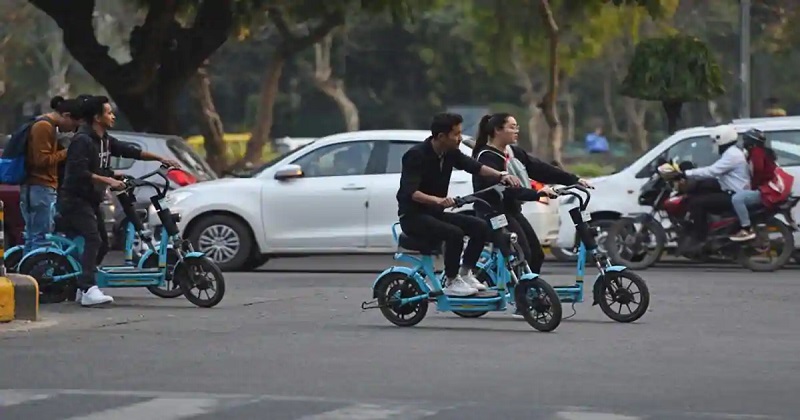
Winter in Delhi, like most regions of northern India, carries toxic air. Climatic circumstances along with periodical occurrences like crop burning and Diwali also deteriorate the air quality. As per the State of Global Air 2018 report, air pollution is a silent killer in India, and the nation failed about 11 lakh people because of it. Contemporary studies reveal that nearly 27% of Covid-19 cases in East Asia are a consequence of long-term vulnerability to polluted air.
Fighting toxic air mandates movement on considerable facades and one such place is receding vehicular emissions. Studies reveal that in a city like Delhi motor vehicles are the main origin of contaminants emissions, donating to about 40% of PM2.5 (ultrafine particles that are less than 2.5 microns in size and are responsible for health issues).To handle the problems of vehicular emission, circumstances like Delhi are bringing a holistic strategy to encourage electric vehicles. Delhi Government’s EV policy has an enterprising mark of holding a 25% stake of battery electric vehicles in new vehicle registrations by 2024.
Regardless, rising electric vehicles requires a substantive position in terms of setting infrastructure expansion, EV model availability, public attention, etc. In complement to this, the increased upfront cost is another key barrier to its uptake. Hence, financing plays a crucial role in scaling up electric vehicles in India. About 40-lakh motor vehicles are sold every year in India out of which only a quarter are purchased outright. The rest 75% are financed by banks, non-banking financial institutions, and others. Banks account for about 60% of the total vehicle lending in the country.
EV finance is that unlike conventional vehicle finance, there are no standard practices and policies for EV finance. Different bank branches have different lending terms based on their risk appetite. A WRI India survey looking at electric vehicle finance practices by banks in Delhi brought some interesting insight into the financing of various categories of EVs in Delhi.
Electric Cars &Electric two-wheelers
Perhaps, this is the only segment where banks are relatively comfortable in lending for personal use. The interest rate charged by most banks is marginally higher than conventional cars. The finance is available for a period of three to seven years and one can get up to 100% of the vehicle value financed. The loan approval, however, is heavily dependent on the customer’s CIBIL score and repayment capability.
There are scarcely any loans obtainable for customers. Renouncing a few private banks, most banks do not finance vehicles in this segment. Also, public banks do not usually subsidize more than 75% of the vehicle value and the loan reimbursement period is usually very brief. The rate of interest could be as high as 14%. Currently, less than 5% of electric two-wheelers are financed, compared to more than 60% of petrol two-wheelers.
The availability of bank loans for electric three-wheelers is even low as compared to two-wheelers. While the banks are reluctant in providing loans to this segment, NBFCs are the only source of finance. In complement to this, high loan reimbursement default rate (almost 30%) along with low ticket size is the main cause banks desire to de-risk themselves from funding this category of vehicles.
There is a further group of challenges for the retail electric vehicle segment. The viability and profitability of the business are highly uncertain. EV business models also have a longer break-even period due to the more increased cost of vehicles. Banks usually deliver a loan based on personal or institutional credibility and the rate of interest is higher corresponded to conventional vehicles. Although the availability of finance for electric cars is good news, it will not change India’s motor vehicle mix as around 70% of the country’s fleet contain of two-wheelers, another 18% are mainly of small and reasonable vehicles like shared, public transport, goods vehicles, and economy cars.
Therefore, the benefits of lowered vehicle emission can only be followed when there is an uptake of electric vehicles in the two-wheelers, three-wheelers, and taxi segments. Banks and other financial organizations are not enforced to keep competitive financing for most EV features due to various reasons, but the crux of the situation is a lack of substantive directive. One way to discharge the directive is by obtaining down the expense of funding these vehicles. Delhi Government’s EV policy, which provides a 5% interest rate subvention for a designated segment of vehicles, is an innovative approach. The right execution of the system may well be the trigger for a zero-emission vehicle future.

Post Your Comments